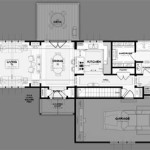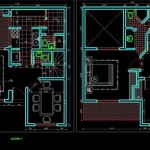How to See the Original Plans for Your House
Accessing the original plans for a house can be invaluable for renovations, understanding the structural integrity, or simply satisfying curiosity about the property’s history. While not always easily obtainable, several avenues can be explored to potentially locate these documents. The success of the search often depends on the age of the house, its location, and the record-keeping practices of the relevant authorities and builders.
Homeowners frequently seek original plans for various reasons. Planning a significant remodel often necessitates knowing the precise location of load-bearing walls, plumbing, and electrical systems. Understanding the original architectural design can help ensure that any alterations maintain the house's structural integrity and aesthetic appeal. Furthermore, the plans can provide critical information for older homes, such as the original materials used in construction, which can be crucial for historically accurate restoration. Finally, some homeowners are simply interested in uncovering details about the property's past and the people who originally designed and built it.
The process of locating original house plans often requires persistence and a systematic approach. It is essential to explore all potential sources and be prepared for the possibility that the plans may no longer exist or be accessible. However, by diligently pursuing the available resources, homeowners can significantly increase their chances of finding the information they need.
1. Local Government and Municipal Archives
One of the primary resources for locating original house plans is the local government. Building departments, planning departments, and historical societies often maintain archives of building permits and related documents, which may include the original architectural blueprints. The specific department responsible for these records can vary depending on the municipality, so it's important to contact the relevant city hall or county government to inquire about their record-keeping practices and procedures for accessing historical building documents.
Building permits are typically required for any new construction or significant alterations to existing structures. When a permit is issued, the applicant is usually required to submit detailed plans and specifications for the proposed work. These plans become part of the public record and are often kept on file by the local government. The availability of these records varies widely depending on the age of the house and the historical record-keeping practices of the municipality. Older records may be stored in physical archives, while more recent records may be digitized and accessible online.
To access these records, it is usually necessary to provide the property address and, if possible, the date of construction. Some municipalities may also require additional information, such as the original owner's name or the building permit number. The process for accessing these records can also vary. Some municipalities allow members of the public to view the records in person during regular business hours, while others may require a formal request to be submitted. In some cases, a fee may be charged for copying or printing the documents.
Furthermore, historic preservation societies or landmark commissions, if present in the area, may have access to additional records or information related to the house's original design. These organizations often conduct research on historic properties and may have copies of architectural plans, photographs, or other documents that are not available elsewhere. Contacting these organizations can be a valuable step in the search for original house plans, especially for older or historically significant homes.
2. Deeds, Titles and Previous Owners
Examining the property's deed, title, and records from previous owners can sometimes lead to clues or direct access to original house plans. The deed itself may not contain the plans, but it can provide information about the original developers, builders, or architects involved in the construction of the house. This information can then be used to track down potential sources of the plans, such as the architectural firm's archives or the developer's records.
Title companies often maintain records of property transactions, including any surveys or plats that were prepared at the time of sale. These surveys may not be as detailed as architectural plans, but they can provide valuable information about the property's boundaries, easements, and the location of the house on the lot. In some cases, the title company may also have copies of the original subdivision plat, which can show the overall layout of the neighborhood and the location of utilities.
Reaching out to previous owners of the property can also be a fruitful avenue for finding original house plans. Former owners may have retained copies of the plans or have knowledge of where they might be located. Contacting them can be achieved through various methods, such as searching online directories, using social media platforms, or contacting neighbors who may have information about the previous owners. Even if the previous owners do not have the plans themselves, they may be able to provide valuable leads or point to other potential sources of information.
When contacting previous owners, it is important to be respectful of their privacy and to explain the reason for the inquiry. Providing them with a brief description of the project and the reasons for needing the plans can help to establish trust and increase the likelihood that they will be willing to assist. It is also important to be prepared to provide them with information about the property, such as the address, the year it was built, and any other relevant details that might help them to recall their time living there.
3. Architectural Firms and Construction Companies
If the name of the original architect or construction company is known, contacting them directly is a logical step in the search for original house plans. Architectural firms and construction companies often retain archives of their past projects, which may include detailed blueprints, specifications, and other construction documents. Even if the firm or company has changed ownership or merged with another entity, the records may still be accessible through their successor organization.
To locate the architectural firm or construction company, it may be necessary to consult historical directories, professional organizations, or online databases. Local historical societies or architectural preservation groups may also be able to provide information about architects and builders who were active in the area during the relevant time period. Once the firm or company has been identified, contacting them is the next step. It's important to explain the reason for the inquiry and to provide as much information as possible about the property, such as the address, the year it was built, and any other relevant details.
If the original architectural firm or construction company is no longer in business, it may still be possible to locate their records through other sources. Professional organizations, such as the American Institute of Architects (AIA), often maintain archives of their members' work. Local universities or libraries may also have collections of architectural drawings and documents. In some cases, the records may have been donated to a historical society or archive.
Even if the original plans cannot be found, contacting the architectural firm or construction company may still be beneficial. They might have other information about the house's design or construction that could be helpful for planning renovations or understanding the property's history. They may also be able to provide recommendations for qualified architects or contractors who specialize in working on older homes.
Another possibility is that the original homeowner commissioned a custom design from an architect not typically associated with large-scale developments. In such cases, finding the architect's name and contact information becomes crucial. Genealogical research might be required to trace the homeowner's records or to find any published articles or mentions of the architect in local newspapers or journals from that era.
In summary, locating the original plans for a house requires a multifaceted approach, involving research at local government offices, historical societies, and potentially contacting previous owners, architects, and construction companies. The chances of success are often tied to the age of the house and the thoroughness of record-keeping practices in the relevant jurisdictions. Diligence and persistence are key to uncovering these valuable historical documents.

How To Get Blueprints Of Your House

How To Find The Original Floor Plans For Your House

The Finalized House Floor Plan Plus Some Random Plans And Ideas Addicted 2 Decorating

My House Original Floor Plan It S Nothing Like This Now Victorian Plans Vintage

How To Find The Plans Or Blueprints Your Old House

The Red Feedsack House On Hilltop Part Two

Graph Paper To Virtual The Heardmont Floor Plan Welcome

David Builds A Home Blueprint Vs As Built

Vignette Design Bucket List 7 Build A House From Scratch

House Plans The Best Floor Home Designs Abhp








